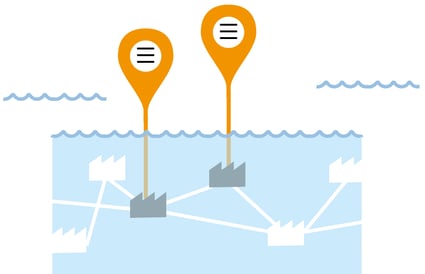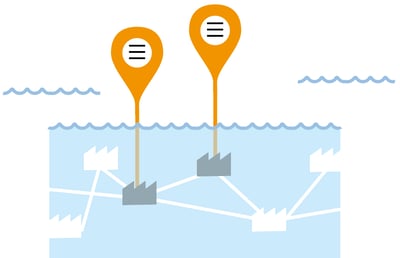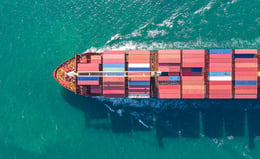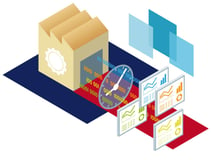What Is Supply Chain Visibility (and Why Should You Care)?
Brian Hoey - November 28, 2019

 As of a 2017 survey, just 6% of companies felt they had reached supply chain visibility. Elsewhere, nearly a fifth of companies listed visibility as their number one operational challenge (it ranks the third highest priority overall), but more than 60% admitted that they didn’t use any technology for monitoring their supply chains. By the same token, more than 90% of businesses have listed digital transformation as a huge driving force in the evolution of the modern supply chain, but fewer than half of those businesses have an actual plan in place for managing that evolution.
As of a 2017 survey, just 6% of companies felt they had reached supply chain visibility. Elsewhere, nearly a fifth of companies listed visibility as their number one operational challenge (it ranks the third highest priority overall), but more than 60% admitted that they didn’t use any technology for monitoring their supply chains. By the same token, more than 90% of businesses have listed digital transformation as a huge driving force in the evolution of the modern supply chain, but fewer than half of those businesses have an actual plan in place for managing that evolution.
That visibility takes center stage for a number of supply chain businesses shouldn’t be too shocking, considering the considerable extent to which it can lower supply chain costs and improve customer satisfaction—but what’s behind this seeming gap between priorities and actual results?
Why Has Visibility Become Such a Buzzword?
On some level, we might attribute it to the growing complexity of the modern supply chain. New IT solutions are being adopted in a confusing patchwork, and integration becomes more difficult the longer companies wait to prioritize it. At the same time, customer demands are driving accelerated expectations for order fulfillment (to say nothing of visibility itself), which puts pressure on supply chain managers to get creative with the ways that they move goods from their point of origin to their final location—no wonder 70% of survey respondents described their supply chains as “very” or “extremely” complex.
What’s a supply chain manager to do? How should businesses navigate what’s consistently proven to be the difficult task of increasing visibility? Well, it might help to get a clearer picture of what we’re talking about, for starters:
What Is Supply Chain Visibility?
Quite simply, supply chain visibility refers to a company’s ability to locate a given part or product’s position in the supply chain as it travels downstream towards the end customer. Conversely, it can also refer to the ability to track particular orders (rather than products) in real time as they move through the value chain. This might not sound like much, but any supply chain manager can tell you how difficult this can be. For a logistics provider, for instance, you may be able to track the movement of goods throughout your various freight routes with the use of internet of things (IoT) devices in your trucks and containers—but to achieve true visibility you also need to be able to track the path of your freight through the factories and production plants in which the goods are being produced. Otherwise, you (and your customers) might be blindsided by late deliveries to your hub or warehouse.
Conversely, a manufacturer could have their entire factory floor digitized in order to track the transformation of raw materials into finished goods, but without integrating their IT with that of their suppliers, they might not be in a position to keep their customers apprised of realistic shipping estimates. In this sense, we can define visibility per se as having two parts:
- Operational visibility: The ability to gain visibility into your own operations, such that any product currently in your care can be located at any given time. In a factory, this might involve IoT sensors monitoring machine usage and inventory levels, plus an interconnected IT network that reduces data silos.
- Partner integration: The ability to choose partners who are capable of driving a high level of visibility internally and willing/able to extend that visibility to their supply chain partners. Once you’ve got your own real-time tracking module in your advanced planning and scheduling suite, for instance, this additional integration is key to covering the entire value chain.
What Does a Highly Visible Supply Chain Look Like?
At this point you might be thinking: that’s all well and good in theory, but how does it work in practice? More specifically, you might be wondering how you can improve visibility in such a way as to also improve profit margins and/or customer satisfaction. It’s a reasonable question, and to illustrate the difference between high and low visibility supply chain activity, we’ll present a hypothetical:
Let’s say you’re a logistics provider working with a handful of manufacturers. You have shipments planned for the week ahead, with freight routes based on the optimized organization of freight into tours. Unfortunately, a massive power outage in one of your clients’ factories means that their goods simply aren’t going to make it to you on time.
In a low visibility environment, this scenario might play out like this: you have no insight into your manufacturing partner’s operations, so you don’t find out about the late delivery until the last possible minute. You’re stuck deciding between trying to reorganize some containers to accommodate those late parts, or sending out LTLs and letting your client dangle. Your goal is to make a decision based on available data, but all you really have to rely on are past orders and shipping logs. Since you don’t have any way to estimate how late the order will actually be, you decide to move ahead with your pre-planned routes, without the manufacturer’s goods in tow. This probably preserves maximum value, but it harms your client relationship and leaves you in a position to scramble to create new accommodations when the products finally do arrive.
With high supply chain visibility, by contrast: you have enough integration with your partner that you’re aware of a potential disruption almost as soon as they are. Rather than scrambling at the last minute to figure out how to handle the situation, you’re well out in front of it, using advanced analytics to reoptimize your routes and freight bundling based on revised ETA predictions. Luckily, because your client and your team are already sharing IT infrastructure, it’s easy enough for you to collaborate in order to create a new plan that meets both of your needs, while getting all of the relevant products to their destinations as close to on-time as possible.
Based on the differences in these two scenarios, the value-add for increased visibility should be pretty obvious. By helping creating better alignment both between expectations and reality and between your businesses and your customers, you can mitigate disruptions and improve your overall planning. The price of admission here is adopting technology that will help you to gather, store, and analyze data within and outside of your organization.
LATEST POSTS
- Understand Circular Economy in The Manufacturing Industry
- How Can Industry 4.0 IT Integration Be Achieved Smoothly?
- The Significance of Order Sequencing in Discrete Manufacturing
- How to improve your Supply Chain Management: The Power of Control Towers
- Optimizing Human Resource Scheduling in Manufacturing: A Technological Approach



